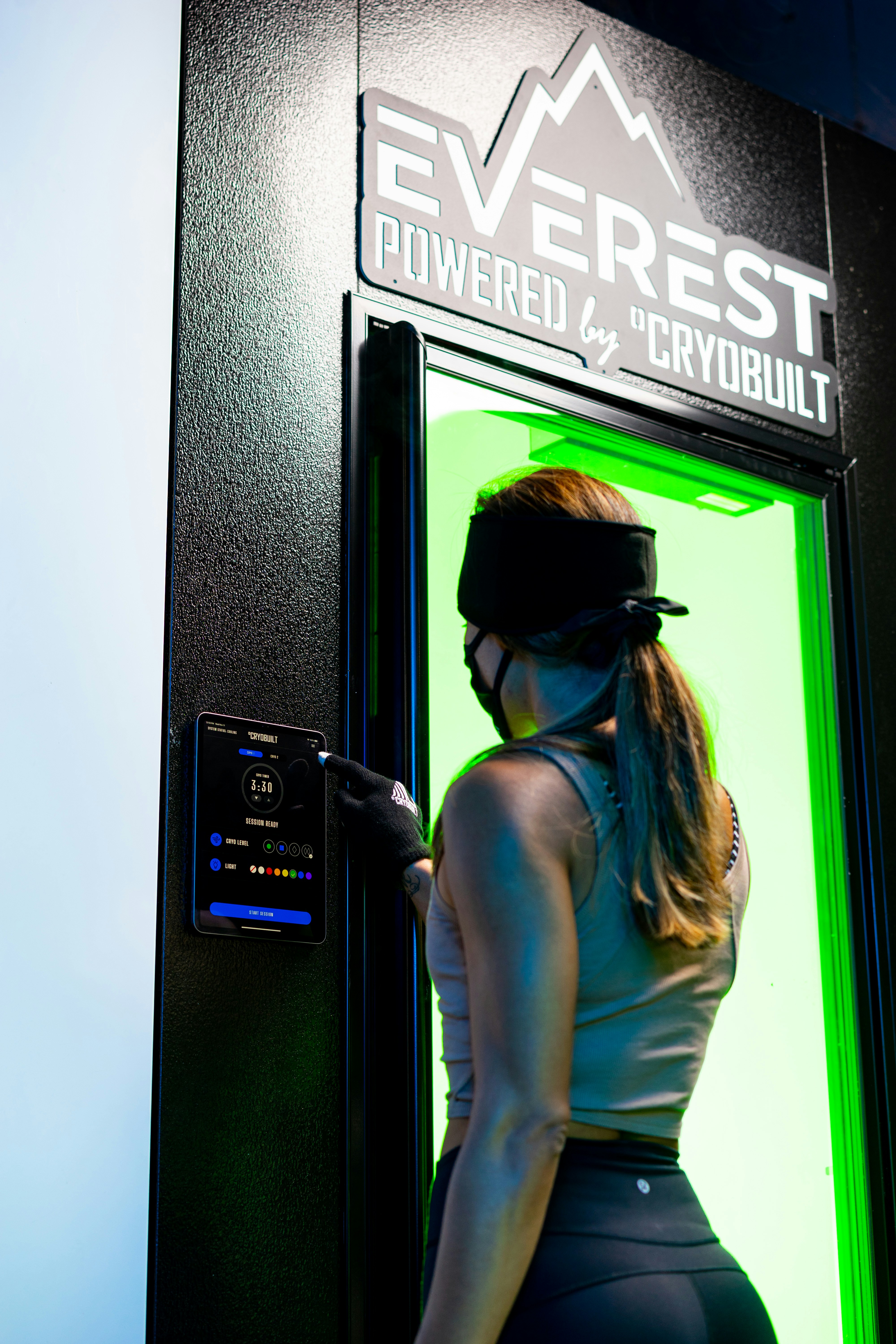Have you ever wondered how cold temperatures can invigorate your body and mind? Cold plunge therapy, also known as cold-water immersion, is becoming a fascinating subject for those interested in health and wellness. This technique uses cold water exposure to potentially enhance physical and mental well-being and may even influence thermal regulation within the body.
What is Cold Plunge Therapy?
Cold plunge therapy involves immersing oneself in cold water for a brief period. Whether it’s a cold shower, a dip in an icy lake, or a specially designed cold plunge pool, the goal is to expose the body to chilly temperatures. Advocates argue this practice can bolster recovery, improve circulation, and support mental health.
The Origins of Cold Plunge Therapy
Cold therapy isn’t just a modern wellness trend; its roots run deep through history. Ancient Greek and Roman cultures utilized cold baths for their presumably therapeutic properties. They believed it invigorated the body, enhancing strength and resilience against the elements. Interestingly, similar practices have been observed in various cultures worldwide, from Nordic countries, famous for their cold water swimming, to Japanese tradition with their winter swimming rituals.
The Science of Thermal Dynamics in Cold Plunge Therapy
Understanding the thermal dynamics behind cold plunge therapy can provide insights into its effectiveness. Essentially, this practice hinges on the body’s thermoregulation abilities—the process of maintaining its core internal temperature.
How Cold Exposure Affects the Body
When you immerse in cold water, your body reacts rapidly, triggering several physiological responses:
- Vasoconstriction: Blood vessels narrow, redirecting blood to critical organs to preserve core temperature.
- Shivering Mechanism: Your muscles will start to shiver, an involuntary response to generate heat.
- Adrenaline Rush: The body releases adrenaline, boosting alertness and energy.
Metabolic Implications
Upon exposure to cold, your metabolism increases significantly to generate heat. This indicator suggests that cold therapy may aid in calorie burning, which interests those pursuing weight loss initiatives. This is an exciting area of study for researchers examining obesity and metabolic health.
Physiological Benefits of Cold Plunge Therapy
Cold plunge therapy’s physiological benefits are attracting considerable attention. Let’s break down how this practice could potentially influence your health.
Enhanced Recovery and Reduced Inflammation
The cooling effects of cold immersion can soothe muscle soreness, reducing inflammation after intense physical activities:
- Reduced Muscle Swelling: Cold-induced vasoconstriction helps diminish muscle swelling.
- Faster Recovery Time: Many athletes utilize it in post-workout routines for quicker recovery, aiding their performance.
Improved Circulation
Alternating between cold and warm temperatures can potentially enhance circulation:
- Vasodilation and Vasoconstriction Cycle: This cycle helps improve blood flow and oxygen delivery throughout the body.
- Cardiovascular Health: Regular exposure may support cardiovascular well-being, though more research is needed.
Psychological Benefits of Cold Plunge Therapy
Besides physical advantages, cold plunge therapy might offer mental and emotional benefits. Here’s how it could impact your mental health endeavors.
Stress Reduction
The adrenaline rush experienced during cold exposure might elevate your mood and energy levels:
- Boost in Endorphins: These “feel-good” hormones might counter stress and promote happiness.
- Mindfulness and Resilience: Confronting the shock of cold water can foster mental resilience and mindfulness.
Enhanced Mental Clarity
Emerging research hints at cold therapy supporting mental clarity:
- Increased Focus: Some individuals report heightened focus and concentration after a cold plunge.
- Cognitive Stimulation: Cold exposure could stimulate the brain, supporting cognitive functions, though more studies are necessary.
The Risks and Contraindications of Cold Plunge Therapy
While cold plunge therapy offers several compelling benefits, it’s crucial to approach it cautiously, understanding potential risks.
Hypothermia and Frostbite
Overexposure to cold can lead to hypothermia or frostbite:
- Hypothermia: Prolonged exposure can lower body temperature dangerously.
- Frostbite: Skin and underlying tissues might be at risk without protective measures.
Medical Conditions
Certain medical conditions might exacerbate risks:
- Cardiovascular Concerns: Cold water can strain the heart, risky for those with heart issues.
- Respiratory Problems: Sudden cold exposure may trigger difficulties in breathing or respiratory issues.
Who Should Avoid Cold Plunge Therapy?
People with specific health conditions should consult healthcare professionals before trying cold plunge therapy. Those dealing with cardiovascular diseases, cold allergies, and respiratory concerns should exercise particular caution.
How to Safely Incorporate Cold Plunge Therapy Into Your Routine
Integrating cold plunge therapy into your wellness routine requires mindfulness and caution. Here’s how to do it safely:
Start Gradually
Ease yourself into the practice to allow your body to adapt:
- Short Sessions: Start with brief immersion periods and gradually increase as you become comfortable.
- Temperature Control: Adjust water temperatures to avoid shock while still reaping benefits.
Monitoring and Support
Keep track of your responses and ensure support systems are in place:
- Monitor Vital Signs: Pay attention to how your body responds; stop if you notice adverse effects.
- Supervision and Spotters: Particularly for beginners, having someone nearby can add safety.

Cold Plunge Therapy in Modern Wellness Practices
Today, cold plunge therapy is appearing in various wellness regimens and fitness routines, reflecting its growing popularity among health enthusiasts.
Athletic Conditioning
Many athletes incorporate cold immersion in their training to enhance recovery and performance:
- Sports Teams and Facilities: Cold plunge pools are common, helping athletes to bounce back faster post-games.
- Fitness Enthusiasts: Personal cold plunge systems are rising, accessible for individual fitness routines.
Therapeutic and Spa Settings
Cold plunge baths are gaining traction in therapeutic and spa environments:
- Contrast Baths: Alternating between hot and cold baths offers a holistic approach to wellness.
- Spa Treatments: Some spas embrace cold plunge experiences, delivering therapeutic retreats.
Exploring Cultural Perspectives on Cold Plunge Therapy
Recognizing different cultural appreciations of cold therapy can enrich our understanding:
Nordic Traditions
Cold bathing traditions in Scandinavia highlight its cultural significance:
- Ice Swimming: Known as ‘Vinterbadning,’ ice swimming in Denmark offers social bonding and health benefits.
- Sauna and Cold Exposure: A classic tradition of using heat followed by cold immersion promotes relaxation.
Asian Practices
In Asia, cold exposure finds places in historic practices:
- Japanese Misogi: Involves standing under cold waterfalls, integrating spiritual and physical wellness.
- Innovative Wellness Communities: Modern Japan embraces technology-driven cryotherapy spas.

Frequently Asked Questions About Cold Plunge Therapy
It’s natural to have questions. Here, you may find some common questions addressed:
What’s the Ideal Temperature for Cold Plunge Therapy?
Typically, cold plunge pools sit between 50-59°F (10-15°C). However, individual preferences play a role, and it’s essential to adjust based on comfort and tolerance.
How Long Should One Stay in the Cold Water?
The time varies depending on experience and tolerance levels. Beginners might aim for short sessions, 1-3 minutes, gradually increasing as adjusted.
Can Children or Elderly Individuals Try Cold Plunge Therapy?
With proper guidance and supervision, it could be possible. However, consulting healthcare providers first is crucial, especially for vulnerable groups.
Conclusion: Is Cold Plunge Therapy Right for You?
Deciding whether cold plunge therapy is suitable involves understanding both its potential benefits and risks. Its thermal dynamics offer intriguing points of exploration, and while it may enhance recovery, boost mental clarity, and diminish stress, it isn’t universally applicable. Discuss it with healthcare professionals, especially if you face health challenges. If approached with care, this chilly exploration might just become a treasured tool in your wellness toolkit.
Taking the plunge into this practice requires not just readiness for a physiological shift, but also a mental embrace of the invigorating chill that redefines healing for many. Is it a simple mind-over-matter, or a profound engagement with nature’s elemental force? Only your journey will reveal where it lies for you.




